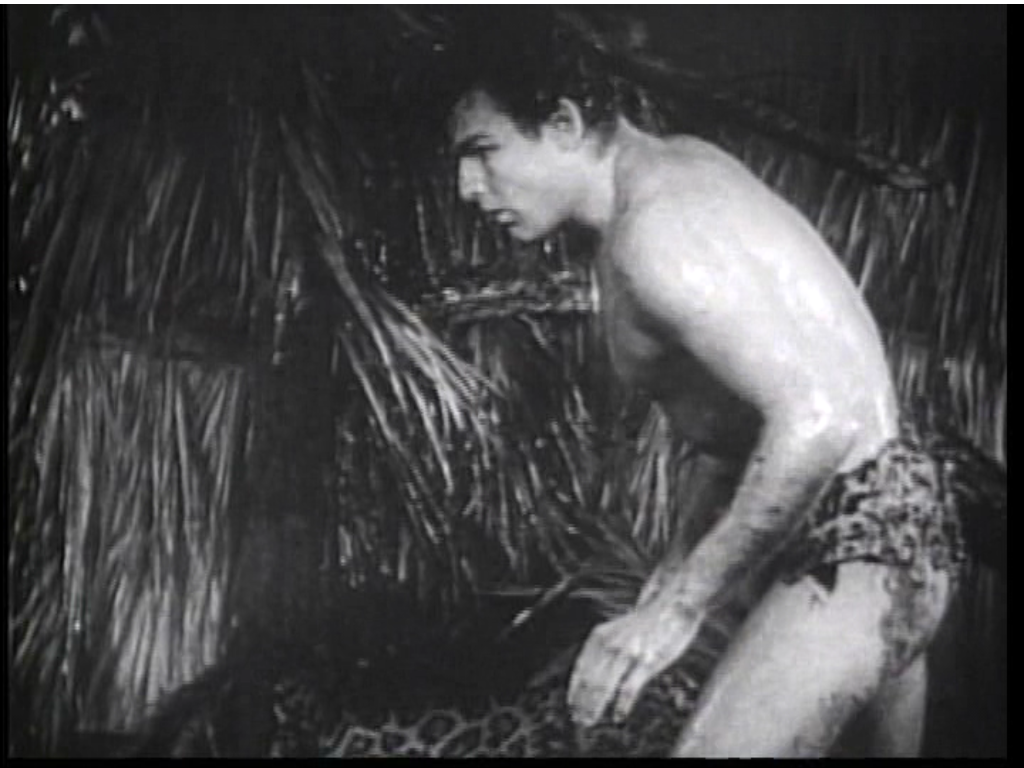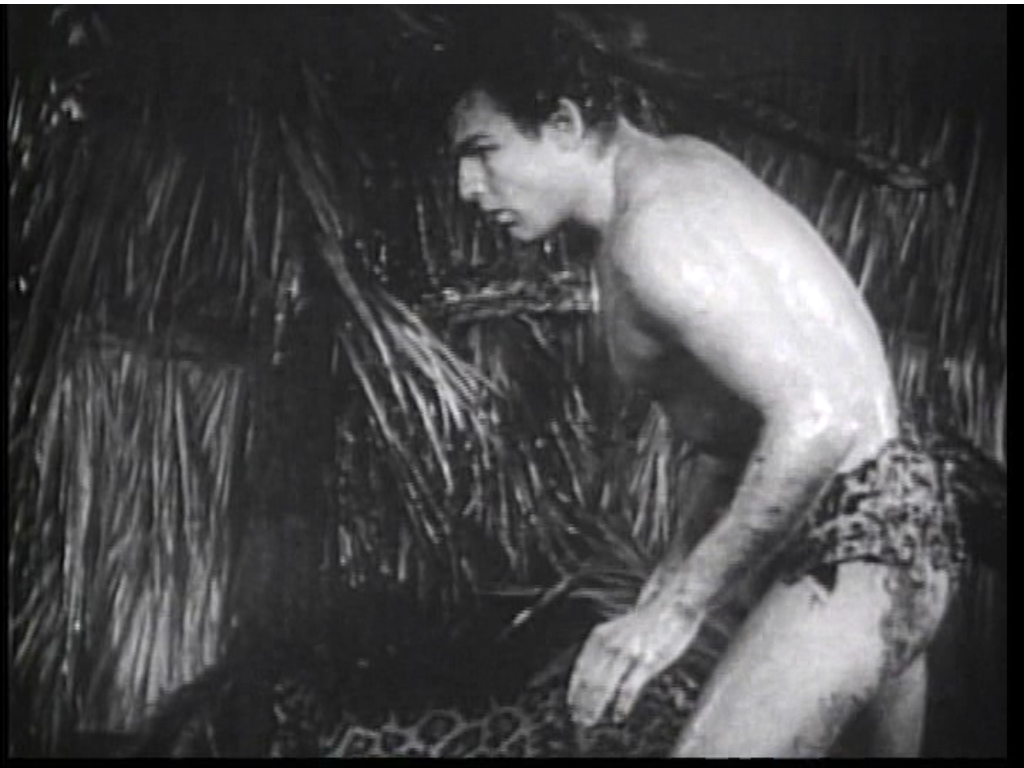Tarzan the Fearless (1933) directed by Robert F. Hill
Mary Brooks’ scientist father has been lost in the jungle. Therefore, she and her good friend Bob Hall have organized an expedition to find Dr. Brooks. Not everyone in the safari is of pure motivation, however. Jeff Herbert, their guide, wants to find a lost emerald mine or kill local legend Tarzan for a reward of 10,000 pounds, or get it on with Mary, in that order of priority. Nick Moran, his sidekick, is just interested in the emeralds. Arab interpreter Abdul is secretly a slaver who wants to sell Mary to a wealthy buyer. Oh, and that emerald mine? Owned by the worshipers of Zar, an Egyptian offshoot that kills all outsiders who stumble on their mine temple.

Good thing Tarzan of the Apes, lord of the jungle, is there to sort all this out!
The version I watched was the 85-minute overseas edition, trimmed down from the 12-chapter serial (since lost). Buster Crabbe, an Olympic swimmer, plays Tarzan. (Due to separate rights sales, this movie came out at the same time as the MGM movies starring Johnny Weissmuller, also an Olympic swimmer.) Tarzan gets several nice swimming sequences, including the requisite crocodile fight. This is supposed to be Tarzan’s first encounter with civilized (read: white) people, so he is mostly silent, picking up a few English words by the film’s end.
The typical serial has a lot of repetition and padding, and that’s been trimmed out to make the feature film the “good bits” version. Indeed, the action hardly ever slows down. But it also results in some lack of coherency. Jeff switches priorities to whatever is most inconvenient for the rest of the group at alarming speed, Tarzan attacks random lions (or is it the same lion?) twice for inadequately explained reasons, and Abdul’s plan to abduct Mary is just plopped in the middle of the movie with no foreshadowing or characterization to make sense of it.
Crabbe’s Tarzan is likable, but relies heavily on the audience already knowing who Tarzan “is” to explain his foibles. Most of the other characters are “types” who do things because that’s what the story requires. Mary is played by Julie Bishop, who does the best she can with the material she’s given, and who you’ll probably recognize from the eighty-plus other movies she was in. Zar is played by a prop from Universal’s The Mummy.
This movie is suitable for “all ages”, though parents of younger viewers may want to talk to them about racial and ethnic stereotypes present that are out of date at best.

